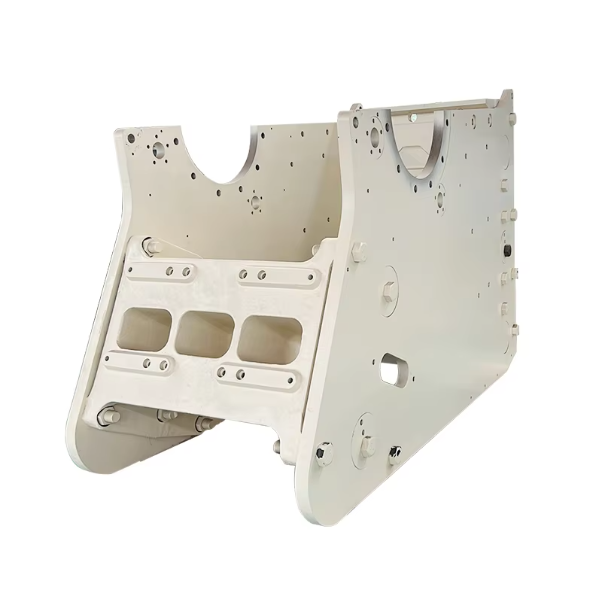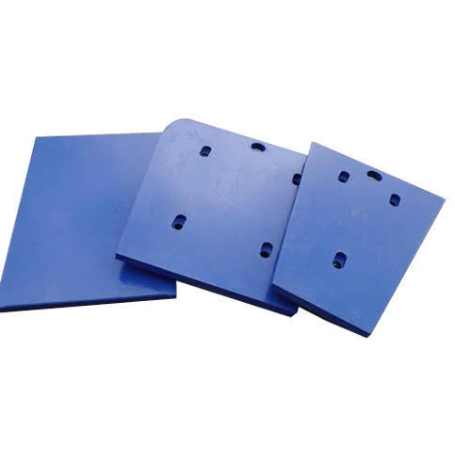Jaw Crusher Frames
The frame, a core load-bearing component of jaw crushers, supports key parts like the fixed jaw plate and eccentric shaft, enduring all crushing forces. It features an integral (small/medium crushers) or split (large models) structure with bearing bores, a fixed jaw mounting surface, toggle plate seat mounts, and reinforcing ribs, made of ZG270-500 cast steel or QT500-7.
Manufacturing involves sand casting (1480–1520°C pouring) with stress-relief annealing, followed by precision machining (bearing bore tolerance H7, flatness ≤0.1 mm/m). Quality control includes UT/MT for defects, tensile testing (≥500 MPa), and load trials ensuring ≤0.2 mm/m deformation under 1.2× rated load.
Critical for structural rigidity, it ensures stable crusher operation with long-term durability.
More






